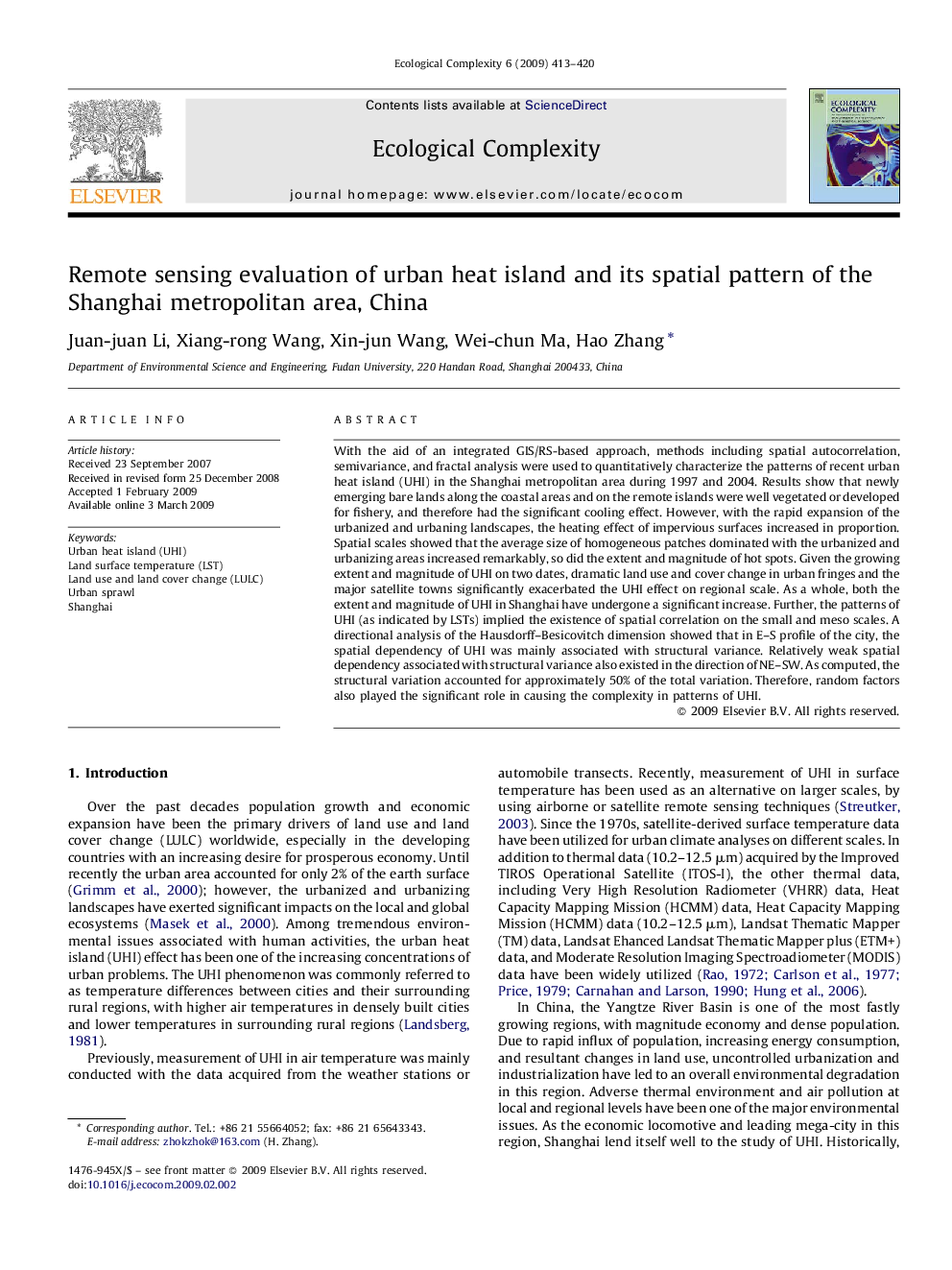| Article ID | Journal | Published Year | Pages | File Type |
|---|---|---|---|---|
| 4372661 | Ecological Complexity | 2009 | 8 Pages |
With the aid of an integrated GIS/RS-based approach, methods including spatial autocorrelation, semivariance, and fractal analysis were used to quantitatively characterize the patterns of recent urban heat island (UHI) in the Shanghai metropolitan area during 1997 and 2004. Results show that newly emerging bare lands along the coastal areas and on the remote islands were well vegetated or developed for fishery, and therefore had the significant cooling effect. However, with the rapid expansion of the urbanized and urbaning landscapes, the heating effect of impervious surfaces increased in proportion. Spatial scales showed that the average size of homogeneous patches dominated with the urbanized and urbanizing areas increased remarkably, so did the extent and magnitude of hot spots. Given the growing extent and magnitude of UHI on two dates, dramatic land use and cover change in urban fringes and the major satellite towns significantly exacerbated the UHI effect on regional scale. As a whole, both the extent and magnitude of UHI in Shanghai have undergone a significant increase. Further, the patterns of UHI (as indicated by LSTs) implied the existence of spatial correlation on the small and meso scales. A directional analysis of the Hausdorff–Besicovitch dimension showed that in E–S profile of the city, the spatial dependency of UHI was mainly associated with structural variance. Relatively weak spatial dependency associated with structural variance also existed in the direction of NE–SW. As computed, the structural variation accounted for approximately 50% of the total variation. Therefore, random factors also played the significant role in causing the complexity in patterns of UHI.
